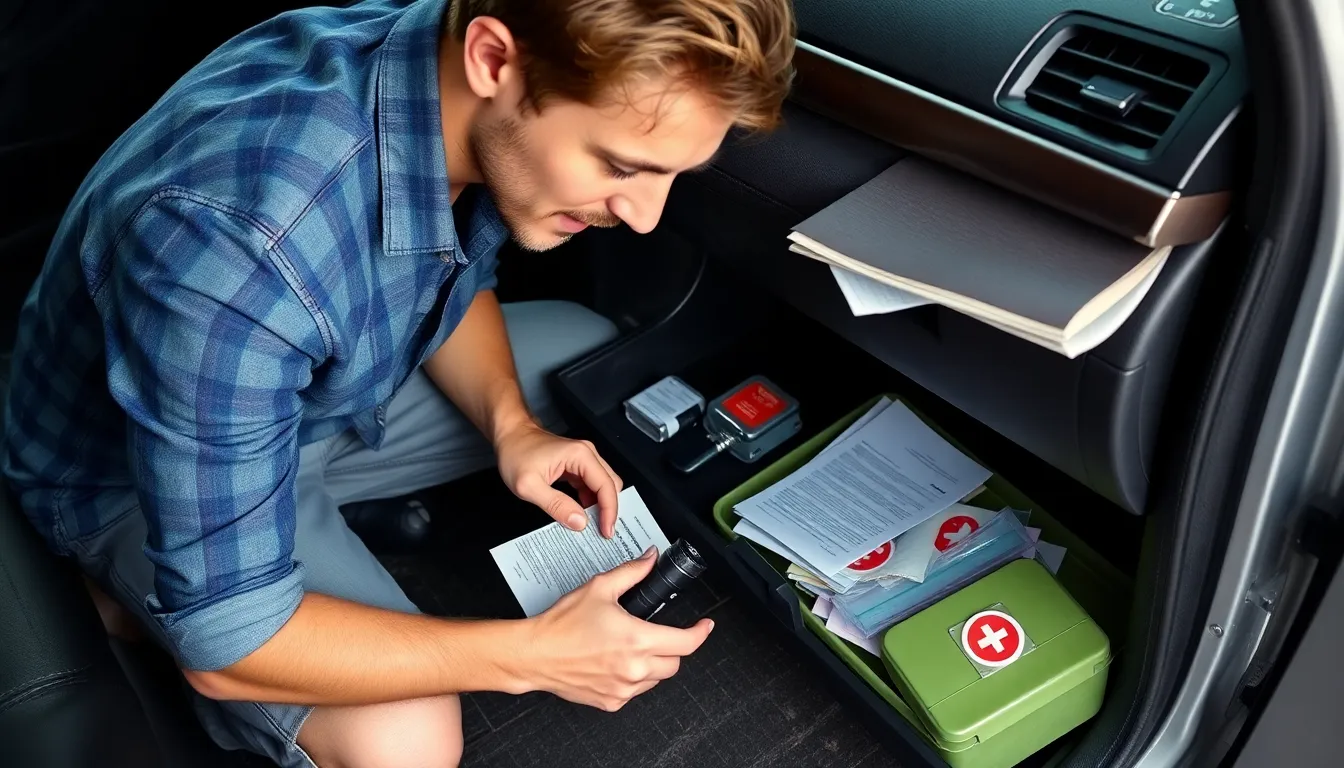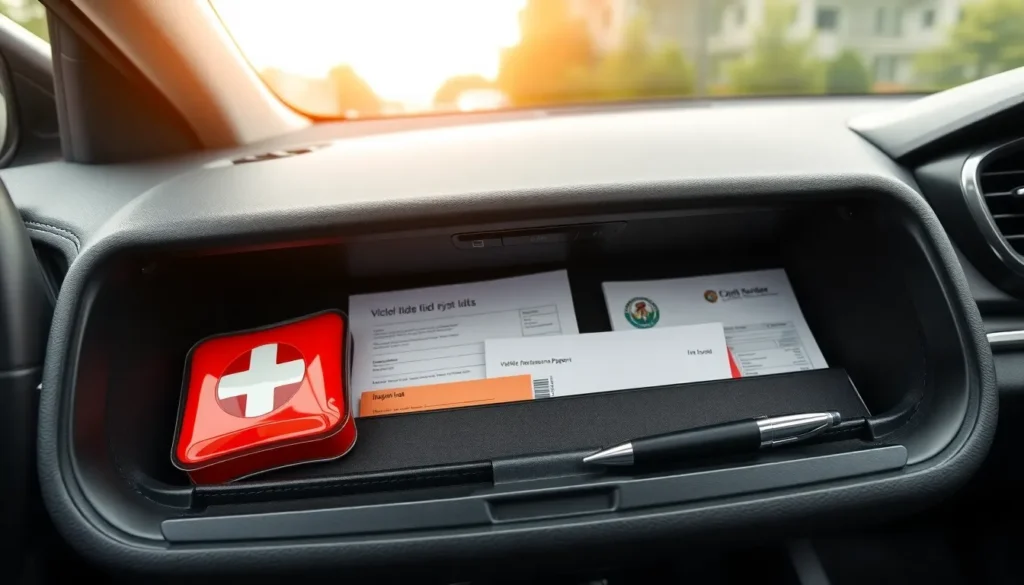Every car owner knows the glove box can quickly turn into a black hole of chaos. One minute it’s a tidy little compartment, and the next, it’s a jumbled mess of expired insurance cards, ancient fast-food napkins, and mysterious objects that might just be a science experiment. If he’s ever found himself digging through this clutter for a simple pen or a car manual, he knows the struggle is real.
Table of Contents
ToggleImportance Of Organizing Your Glove Box
Organizing a glove box enhances vehicle safety and convenience. A clutter-free environment allows quick access to necessary items, such as registration documents and insurance cards. Stress often arises from searching for essential objects buried under stacks of papers or forgotten items.
Efficiency improves significantly with a well-organized glove box. It minimizes distractions while driving, ensuring attention remains on the road. Clean compartments also foster better preparedness for emergencies, thanks to easily accessible tools or first aid kits.
Maintaining organization contributes to the longevity of important items. When documents stay protected, they remain legible and usable. Regularly reviewing contents prevents accumulation of outdated materials and encourages timely disposal.
Reduced frustration complements overall driving enjoyment. A chaotic glove box often leads to negative experiences, while an orderly one promotes peace of mind. Identifiable sections or compartments make retrieving items as simple as possible.
Organizing can also lead to better vehicle performance. Keeping track of maintenance logs or warranty information allows for easier adherence to service schedules. Accurate records support timely repairs, enhancing the vehicle’s lifespan and functionality.
Improved organization fosters personal responsibility and care. Individuals take pride in maintaining their vehicle, reflecting their overall attention to detail. An organized glove box can be a simple yet effective reflection of one’s approach to vehicle care.
Steps To Organize Glove Box


Organizing a glove box can streamline access to important items. Each step contributes to an efficient system for managing vehicle essentials.
Emptying The Glove Box
Start by removing everything from the glove box. Placing items on a flat surface allows for an unobstructed view of the contents. Discard any expired documents, receipts, or unrelated items. Taking inventory of what remains helps in the next steps of the organization process. Set aside significant items, such as insurance papers and manuals, for easy access later.
Assessing The Contents
After emptying, evaluate each item. Check for relevance and necessity, as not every item must stay. Identify essential documents like the vehicle’s registration and emergency contact information. Review expiration dates on items like insurance papers. Make decisions about what to keep, toss, or relocate to other storage areas in the vehicle.
Categorizing Items
Begin grouping items by category for an organized glove box. For instance, place documents together, such as maintenance logs and manuals. Designate a separate space for everyday items like pens, flashlights, or napkins. Clearly categorize emergency supplies, including a first aid kit or a tire gauge. This systematic approach ensures every item has a designated spot, facilitating easy access and improved organization.
Essential Items To Keep In Your Glove Box
Organizing a glove box ensures easy access to vital items while driving. Essential items improve safety, efficiency, and convenience on the road.
Emergency Supplies
Emergency supplies play a crucial role in vehicle preparedness. Include a first aid kit stocked with bandages, antiseptic wipes, and pain relievers. A flashlight with spare batteries enhances safety during nighttime emergencies. Adding basic tools like a tire pressure gauge and a multi-tool offers quick solutions to minor repairs. An emergency blanket keeps passengers warm if stranded in cold weather. Lastly, a reflective triangle or road flares increasing visibility during breakdowns ensures driver safety.
Documentation
Documentation should be readily available for successful vehicle operation. Essential documents are vehicle registration, insurance papers, and the owner’s manual. Proof of insurance helps with law enforcement interactions. An updated list of emergency contacts can be critical during incidents. Keeping maintenance logs allows for tracking service dates and repairs, promoting informed vehicle management. Additionally, including the vehicle’s warranty information assists in knowing coverage details for repairs.
Convenience Items
Convenience items streamline daily driving experiences. A pen and paper pad provide a quick way to jot down notes or reminders. Snack items can be handy during long trips, preventing hunger pangs. Sunglasses come in useful for bright days, enhancing visibility. A phone charger keeps devices powered, essential for navigation or communication. Lastly, a multi-compartment organizer helps separate items, allowing easy retrieval without cluttering the glove box.
Tips For Maintaining An Organized Glove Box
Maintaining an organized glove box requires consistent effort and attention. Simple practices can significantly enhance the usability and functionality of this space.
Regular Cleaning
Schedule regular cleaning every three months. Empty the glove box completely to start fresh. Remove any old receipts, expired documents, or unnecessary items. Use a damp cloth to wipe down surfaces and eliminate dust. Regularly checking contents keeps clutter at bay. Dispose of trash responsibly to maintain cleanliness. Making this a routine can have a long-lasting impact on the organization of the glove box.
Periodic Checks
Conduct periodic checks of glove box contents every month. Inspect essential documents for expiration dates and relevance. Replace any outdated materials with current items like new insurance cards. Group items into categories like emergency supplies or personal items for better organization. Label sections if necessary to quickly identify where essential items reside. Keeping the glove box organized eases access during drives and enhances safety. Following this practice leads to a more efficient and enjoyable driving experience.



